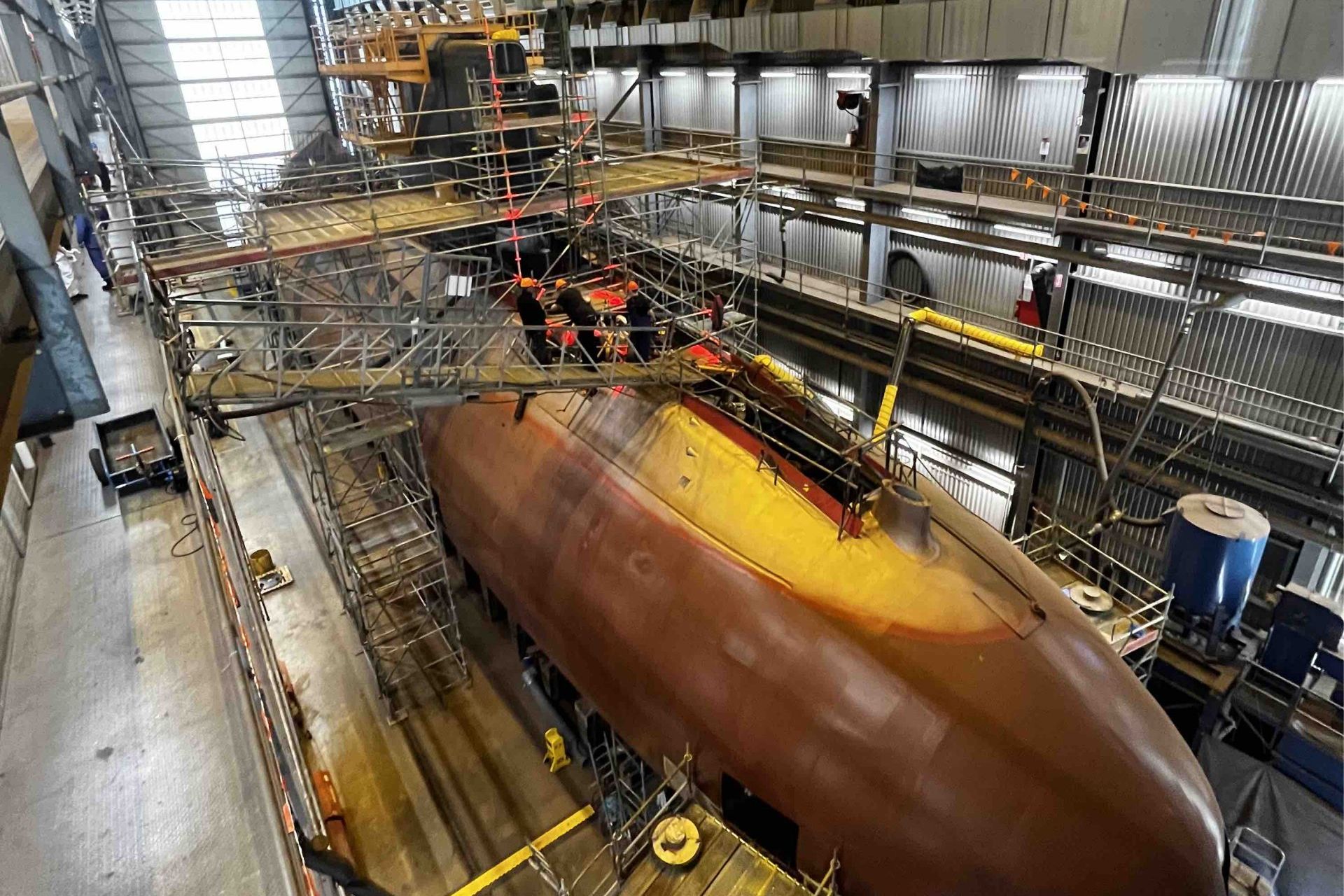Breaking News
Royal Netherlands Navy shares photos of Walrus-class submarine maintenance.
According to information published by the Dutch MoD on October 18, 2024, the Royal Netherlands Navy has released new images showcasing the ongoing maintenance work on its Walrus-class submarines. These submarines are undergoing a series of essential upgrades aimed at ensuring their continued service. Key activities include the replacement of batteries and various onboard systems critical to their functionality.
Follow Army Recognition on Google News at this link

Netherlands Navy's Walrus class submarine. (Picture source: Dutch MoD)
The Royal Netherlands Navy is undergoing a significant upgrade of its submarine fleet, centered around the Orka-class program. This new class of submarines will replace the aging Walrus-class, which has been in service since the 1990s. The contract for this project was awarded to the French Naval Group in 2024, following a competitive and extensive procurement process. The agreement includes the construction of four submarines that will enhance the Navy’s underwater capabilities.
These submarines are part of the Barracuda family and will be diesel-electric variants specifically designed to meet the Netherlands' operational requirements. The new submarines, named Orka, Zwaardvis (Swordfish), Barracuda, and Tijgerhaai (Tiger Shark), will strengthen the Royal Netherlands Navy's strategic autonomy and submarine warfare capabilities. The first two submarines are expected to be delivered within the next decade.
This program is not just about defense modernization; it also represents a significant collaboration between the French Naval Group and the Dutch maritime industry, highlighting the Dutch government’s efforts to maintain a strong defense industrial base. The Orka-class will be integral to NATO’s strategic deterrence efforts in the North Atlantic.
The contract value is estimated at €5.4 billion, and the first two submarines should be operational by the early 2030s, ensuring that the Netherlands continues to maintain a capable and modern submarine fleet well into the future.
Technical comparison
The Walrus-class submarines have a displacement of around 2,800 tons, while the Barracuda-class, designed specifically for the Netherlands, has a significantly larger displacement of approximately 5,300 tons. This size difference allows the Barracuda class to carry more advanced systems, larger payloads, and have greater endurance.
In terms of propulsion, both submarine classes are diesel-electric, but the Barracuda class benefits from more advanced air-independent propulsion (AIP) technology. This allows the Barracuda submarines to remain submerged for longer periods, providing a strategic advantage in stealth and operational flexibility, whereas the Walrus-class has more limited underwater endurance due to its older propulsion technology.
Stealth and sensor technology have also seen major improvements in the Barracuda class. The newer submarines are designed to be much quieter and harder to detect compared to the Walrus class. Additionally, the Barracuda class comes equipped with six torpedo tubes, allowing for a broader range of offensive capabilities, including anti-ship and land-attack options, a significant step up from the Walrus class's more limited armament.


























